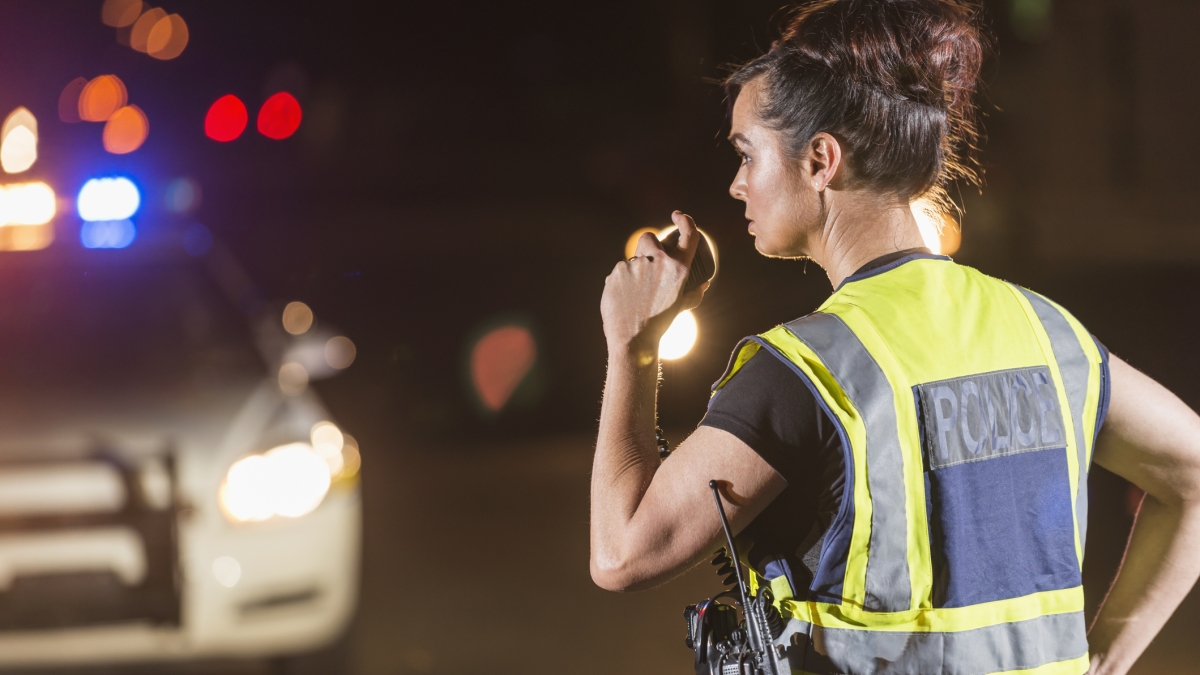Police officers’ use of excessive force — as well as the resulting legal outcomes — have shaken communities across the United States. Police departments are increasingly requiring their officers to wear body cams and to film their interactions with the public. It’s thought that video provides an objective take on what occurs during officers’ interactions with the public.
Jessica Salerno. Photo by Charlie Leight/ASU Now
But new research from Arizona State University researchers Jessica Salerno and doctoral student Justin Sanchez suggests that people believe police use of force is more situationally justified when a female officer uses it. Furthermore, people’s interpretation of video footage may not be objective when it comes to gauging force during policing, according to the researchers.
In this study, Salerno and Sanchez tested how 452 study participants interpreted the same “objective” video of an officer using force based on what they believed the officer’s gender and race to be. The study, “Subjective Interpretation of ‘Objective’ Video Evidence: Perceptions of Male versus Female Police Officers’ Use of Force,” was published March 12 in the journal Law and Human Behavior.
The researchers found that even though all participants were watching the same interaction, participants believed that when a male officer used force, it was driven by internal traits, such as aggressiveness or emotional reactivity, which was associated with decreased trust and perceived effectiveness.
In contrast, participants who believed they saw a female officer use force believed her actions were driven more by external aspects of being in a dangerous situation, which was associated with increased trust and perceived effectiveness.
All participants were randomly assigned to view a segment of the same police-civilian interaction that either did or did not include force. The force used was obvious on the dash cam video. However, the officer was wearing dark clothing against a dark background and the interaction occurred far away from the dash cam, so it was difficult to determine the gender and race of the officer.
To determine how participants would interpret the incident differently based on the officer’s gender and race, the researchers randomly assigned participants to view one of a set of different photographs of an officer. They were told that the officer in the photo was the officer in a video they were about to watch. Each participant saw a photograph of either a white male officer, a white female officer, a black male officer, or a black female officer.
“Because we don’t stereotype women as aggressive, it’s surprising when a woman is physically aggressive,” said Salerno, an associate professor in the School of Social and Behavioral Sciences. So, participants tend to attribute a female officer’s behavior to external factors, not to stable personality traits.
“People explain her use of force by looking at the dangerous situation,” she said.
However, when officers of either gender used force, participants trusted officers less and perceived them to be less effective than when they did not use force.
“We definitely saw people having very negative reactions to use of force,” Salerno said.
Research conducted over decades shows that people tend to attribute others’ behavior to internal motivation; in essence, who they are, Salerno said.
“For example, if someone commits a violent act, people tend to say it’s because they’re a violent person,” she said.
Salerno said she was surprised by the study’s results. “I have to say I was very surprised because I’ve been doing years of work that keeps showing over and over that when women in their professions act in masculine ways they tend to get penalized for it. I think that’s why this particular study is interesting.”
“There’s this idea that video is going to get rid of the controversy and disagreement about police use of force,” Salerno said. “But this study shows that people are still going to disagree because their viewing of the same interaction is going to be filtered through their own biases and stereotypes.”
The study also has bearing on our justice system, Salerno said. “We hope that everyone will be treated the same, but if jurors were looking at the video of the police using force it would seem that male officers might be punished more harshly than female officers. They’re all watching the same incident, but they might judge that person more harshly because they make different assumptions about what drives a male versus female officer’s aggressive behavior. It’s an example of how gender stereotypes can potentially lead to different outcomes.”
This research was supported by a grant from the American Psychology-Law Society awarded to Justin Sanchez.
Top photo credit: Getty Images
More Arts, humanities and education

2 ASU professors, alumnus named 2025 Guggenheim Fellows
Two Arizona State University professors and a university alumnus have been named 2025 Guggenheim Fellows.Regents Professor Sir Jonathan Bate, English Professor of Practice Larissa Fasthorse and…

No argument: ASU-led project improves high school students' writing skills
Students in the freshman English class at Phoenix Trevor G. Browne High School often pop the question to teacher Rocio Rivas.No, not that one.This one:“How is this going to help me?”When Rivas…

ASU instructor’s debut novel becomes a bestseller on Amazon
Desiree Prieto Groft’s newly released novel "Girl, Unemployed" focuses on women and work — a subject close to Groft’s heart.“I have always been obsessed with women and jobs,” said Groft, a writing…



